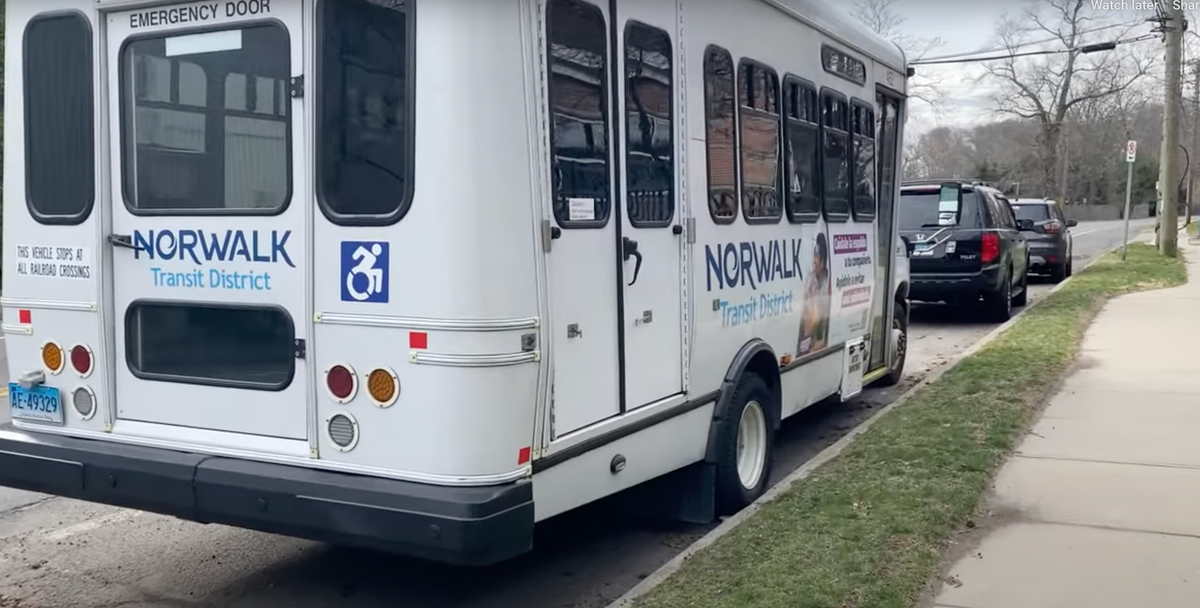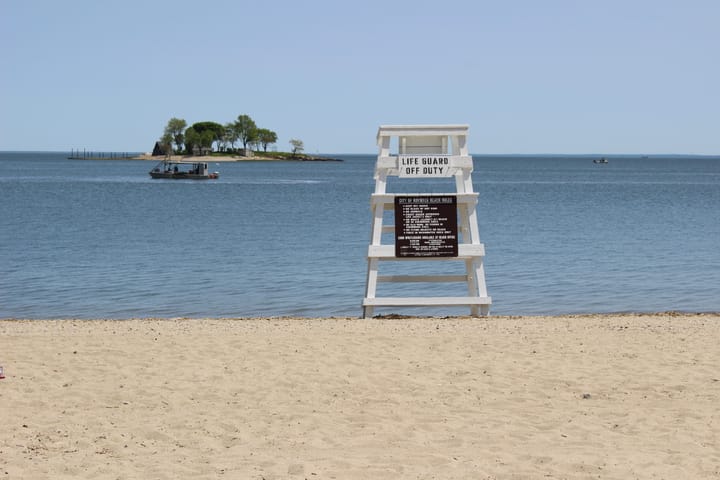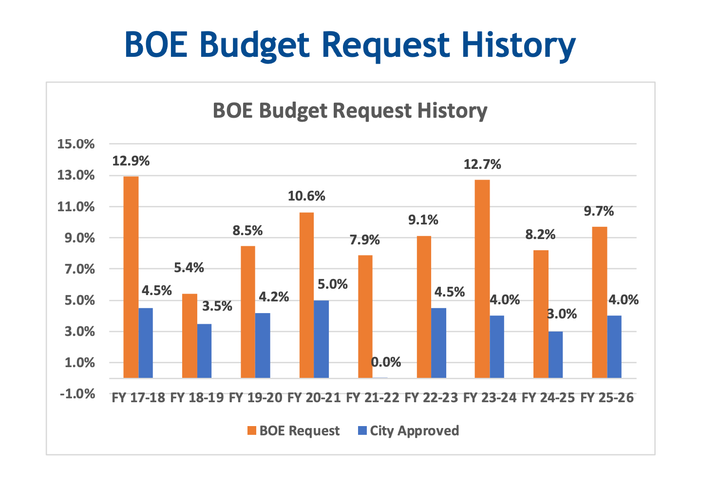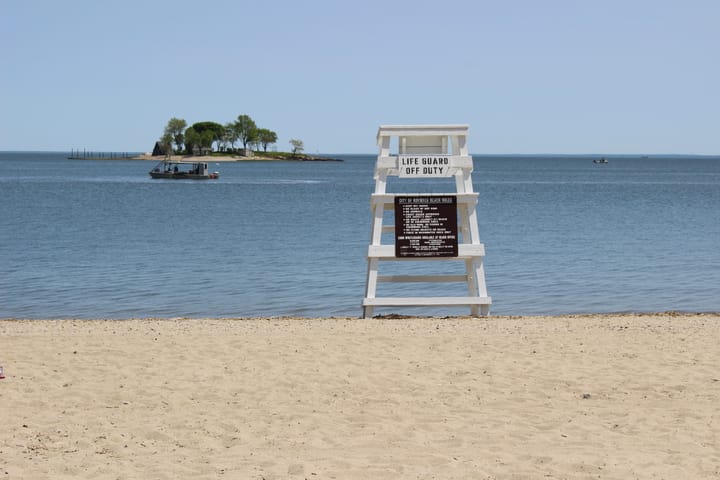Microtransit Expands Across Southwest Connecticut
Stamford and Norwalk each received more than $2 million from the state to add or expand microtransit.

Microtransit “is basically a cross between transit and Uber so it’s on-demand shared rides,” according to Frank Petise, Stamford’s Transportation Bureau Chief. The service usually involves a smaller vehicle than a city bus—think minibus or SUV—paired with an app and phone number that allow users to request a ride, similar to ridesharing services like Uber. Multiple riders can be picked up by the same vehicle and dropped off at their destinations inside of the microtransit service areas.
Microtransit has already been used in the region—in Norwalk and Westport, but new funding from the state will add microtransit options to Stamford and grow the offerings in Norwalk.
“Microtransit is bringing additional transportation services to more people,” Governor Ned Lamont said in a statement.
Stamford received a two-year $2.6 million grant from the state to launch a pilot microtransit program, while Norwalk received a two-year $2.1 million grant to expand its microtransit offerings.
The cities must launch their microtransit services within six months of receiving the grant and the program will last for two years with the potential for two additional one-year extensions, based on performance and ridership.
Why Microtransit?
Officials cite microtransit as a way to connect residents in their cities to the existing transportation network, such as using microtransit vehicles to get from their homes to the train stations to commute to work.
“With first and last mile connections, gaps in Connecticut’s extensive public transportation system will be closed,” Lamont said in a statement. “Whether it’s going to an appointment, grabbing a bite to eat, or meeting up with friends and family, microtransit service improves the quality of life for our residents.”
Petise told the Stamford Board of Finance this month that their pilot program will cover an approximately five mile radius in the city, particularly targeted at serving the East Side, West Side, and Waterside neighborhoods.
“The idea is to supplement our current transit system,” Petise said. “We lack an east–west connection in Stamford so we’re looking to serve those underserved neighborhoods on the East and West Side and connect them to Downtown as well as the Transportation Center.”
Matt Pentz, the head of the Norwalk Transit District, said that the expansion grant would allow the district to expand microtransit to cover the whole city and offer services throughout the week.
“There's always that need for first mile, last mile [transportation] and we’re really just trying to get people into the transportation network who may live on the fringe, give them an opportunity to have an alternative means of transportation. If you live in a remote area in Norwalk, now it's available. It'll bring you into the service area. That's all first mile last mile concept, and that's something we were thinking about.”
How the Service Works
In Norwalk, the current Wheels2U microtransit program is available Thursday and Friday evenings, as well as all day Saturday and most of the day Sunday.
The expanded hours are more for “workforce and seniors and daytime commuting,” Pentz said, compared to the current offerings which catered more toward people using it for entertainment purposes.
“This [program] is going to be six vehicles available throughout the entire city of Norwalk, Monday through Friday 7 a.m. to 7 p.m. and we're excited about it,” he said.
While Norwalk uses mini buses for its microtransit program, Stamford will be using SUVs for its pilot, Petise said. The city will use Via, the transportation provider which has been approved by the state (and is the provider Norwalk uses for its app). Via will provide the vehicles and drivers in Stamford.
Petise said that there will be at least one accessible vehicle to accommodate people with wheelchairs with about six vehicles total. The microtransit service will run primarily in the Downtown, East Side, West Side, and Waterside neighborhoods.
Luke Buttenwieser, a transportation planner for Stamford, said that in the neighborhoods they’re targeting with this program about 1 in 5 households don’t have a car.
While the Board of Finance unanimously voted to accept the grant, some members raised skepticism about the program.
Dennis Mahoney, a member of the Board of Finance, said that “$2.5 million is an incredible amount of money.”
“I rarely see a bus that’s remotely filled so I wonder about this—how do you judge the success?” he said.
He added that he thought it was a “very noble idea,” but one that could end up wasting money.
“We will have access to the data,” Petise said. “We will be able to look at the ridership and that’s how we’ll be able to look at the success—we’ll look at the hours it’s running and being used.”
Mary Lou Rinaldi, a member of the Board of Finance, said that she was supportive of the grant, but was concerned that this program could end up in the city’s operating budget in a few years.
“I don’t have a problem with the grant but I’ve been around long enough to know—we spend the money, it becomes a program that people like and after two years the funding goes away and then it potentially rolls into the city operating budget,” she said. “We’ve seen it happen time and time again.”
Petise said that he believed the state wanted to see how the microtransit programs did before discussing future funding. Besides Stamford and Norwalk, seven other areas of the state received funding including River Valley Transit in Madison, Guilford, and portions of East Hampton and Middletown; Greater Bridgeport Transit for Trumbull; Greater Hartford Transit; Milford Transit; New Haven; Southeastern Area Transit for portions of Stonington, Mystic, Noank, and Waterford; and Valley Transit District for the Ansonia Train Station, Derby, and Shelton areas.
“From my understanding the state is looking at how successful these programs are before they commit funding beyond the two years,” he said. “We’re going to do the same thing here.”
Part of the Future of Public Transportation
Pentz said that he sees microtransit as a “good complement of fixed route” bus service.
“I think microtransit is huge in terms of getting into those areas where the big bus can't get to and it really just expands the footprint and the accessibility of public transit,” Pentz said. “It really can complement our fixed route ridership. I mean, people who otherwise wouldn't take public transportation, it’s going to allow them to. So it should grow ridership, bring them into our network, and it's just a wider net of accessibility.”
He said that the microtransit service in Norwalk started as a pilot in 2018 and had started to gain momentum before COVID, so they’re hoping the expanded service can help bring ridership back. Pentz also cited the Wheels2U Westport program, which the Norwalk Transit District runs, as an example of how the on-demand service can work instead of bus service in smaller communities.
“I think Westport, it's really neat what they did there, how they converted their commuter shuttles to micro transit and we're seeing growth in ridership,” he said. “And so, I'm really excited to see what it's going to do here.”



